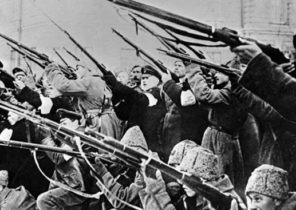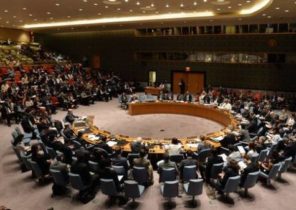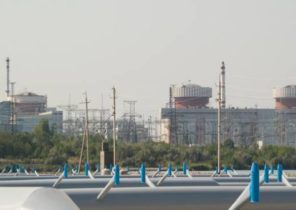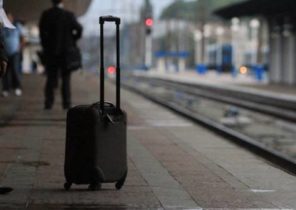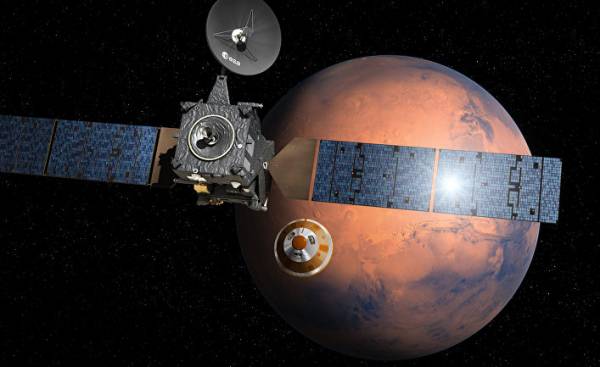
Someday astronauts stuffed like sprats in a tin can rockets and flying to other planets, from radiation and space of the disease will protect the decrease in the rate of metabolism in the body. They will be for many months to hibernate like bears, but the spacecraft will carry them through space and time. Probably they will sleep in white cocoon-like coffins, which we show filmmakers futuristic kinofantastiki in films such as “2001: a Space Odyssey”, “Alien” and “Avatar.”
But most likely, astronauts and space colonists will learn something from dehydrated snails, which can live more than a year, no eating. Or have giant pandas, and food which is low calorie bamboo. And yet leeches are able to survive in liquid nitrogen; the children in ice cold water and then resuscitated; skiers buried in an avalanche of snow, but then slowly returning to life devoid of dreams state of hypothermia.
Scientists call this phenomenon “sleep in a state of stupor.” Once such a daze, or torpor, felt something strange and outlandish, and was called “indifference functions”. Now seriously studying it, hoping to reap the benefits for long-term space flights.
This interest is partly due to the success of cryogenic surgery and a new knowledge gained in practice. One such case was described in 1995 in the journal Prehospital and Disaster Medicine. A four year old boy fell through the ice into cold water on a lake in the German Hanover. Rescuers pulled him from the water, but to bring to life on the spot could not. The pupils of the boy widened and heart stopped for the whole 88 minutes. When the victim was brought to the hospital, the body temperature had been 20 degrees, indicating extreme hypothermia.
20 minutes later, when doctors began to warm the chest cavity of the boy, the ventricles of the heart, he began to shrink. Another ten minutes and recovered to normal sinus rhythm. For two weeks the boy recovered completely and was discharged from the hospital. The doctors came to the conclusion that ice water is rapidly cooled his body to a state of metabolic torpor (torpor), retaining all the vital organs and tissues, and at the same time, reducing the need for oxygen for blood circulation. In fact, the cold saved his life. “Such cases make us think that very deep hypothermia may allow our patients to survive — I wrote an email to Professor of surgery Samuel Tisherman (Samuel Tisherman), working at the medical faculty of the University of Maryland. — The main thing is to cool the brain or to stop blood flow, or immediately after stopping. The lower the temperature, the better the brain will cope with the lack of blood supply”.
Therapeutic hypothermia is firmly entrenched in surgical practice. Experiments with cooling started in the 1960-ies, mostly with newborns and patients cardiovascular disease. Newborns were wrapped in cooling blankets, placed in ice, and even in the snow to slow down the blood circulation and reduce the need of oxygen before the heart surgery.
Today doctors are using moderate hypothermia (about 31 degrees) for the treatment of certain newborns in severe cases, such as premature labor or fetal hypoxia. Children being treated in the cooling capsules within 72 hours, lowering their metabolism to such an extent as to ensure the needs of the tissues for oxygen and the brain and other vital organs are restored.
Similarly, surgeons use cooling and suppression of metabolism in the treatment of patients suffering from physical injuries such as heart attack, stroke, gunshot wounds, excessive bleeding and head trauma causing brain swelling. In emergency situations the anesthesiologist may enter a patient’s nose a thin tube called a catheter, which delivers the cooling nitrogen directly to the base of the brain. In the course of a medical experiment surgeons catheter is heart-lung machine through the chest the aorta, or through the groin into the femoral artery. On these tubes, they served cold saline to decrease body temperature and replace lost blood. When trauma stops bleeding, the apparatus heart-lung re-launches the bloodstream and the patient receives blood transfusions.
“If you apply the cold fast enough to stop the heart, then vital organs, particularly the brain, some time will be able to withstand the cold without blood,” explains Tisherman. He conducts clinical trials with the flow of cold saline in the clinic of Baltimore, trying to help patients with severe injuries. Tisherman hopes to continue his studies at least until the fall of 2018, and perhaps longer.
Hypothermia occurs rapidly slows or stops blood circulation for about an hour. Accordingly decreases the need for oxygen, and surgeons time to treat life-threatening wounds, after which they can warm up the patient and bring him back to life.
Mystery corpora
Today, many in the aerospace community are pinning their hopes on health posed by hypothermia and the resulting slowing of metabolism, seeing it as a way to save on space, weight, cargo, fuel, food and repair the depression during the long flight to Mars or a more distant planet. Studies in this direction are just beginning. One problem is purely medical in nature. What is the best way to introduce a healthy astronauts into a state of hibernation? About therapeutic hypothermia in the operating theatre is well known, but for weeks, months and even years to keep in a refrigerated state and in the hibernate people in space? This is a completely unstudied area. Some scientists studying hibernation in animals, say that it is better to use other methods of suppressing the metabolism. This is a special diet, the low frequency radiation and even the use of proteins that cause hibernation at animals such as bears and Bering gophers, because they safely adjust the metabolic rate to output from corpora.
Another obvious problem is funding. How much money to allocate NASA to study the slowing down of the metabolism in animals and humans, if the Agency cut the budget even for a space flight? Former Director of the Ames Research center in California Pete warden (Pete Worden), who now works as Executive Director of project Breakthrough Starshot, said that because NASA attaches great importance to synthetic biology and the issues of survival and functioning of organisms in an unusual environment such as Mars, “the fact that the study area hibernation will be financed, it is almost inevitable”.
Such optimism is not shared by all. “People are frustrated, says studying in Moscow radiobiology, NASA and lead researcher of division of space biology center Ames Yuri Griko. When in 1957, flew into space Sputnik, my generation rejoiced and rejoiced. We believed that we would be flying to Mars in the 20 th century. But…in the 21st century, and on Mars, we never flew. Do people like me a feeling of personal resentment, as we expected will move much further than now.”
Grieco admits that research on the reduction of metabolism are currently in limbo. To work at NASA, he came in 2005, and before that five years worked in the firm’s biotechnology Clearant, Inc., where, with the help of ionizing radiation blocked the activity of pathogenic microorganisms in medical blood products, organs for transplantation and biologics. Then the space Agency has invited Griko to conduct research to protect astronauts from cosmic radiation. It turned out that a slow metabolism is one of the most effective mechanisms given to us by nature.
When animals hibernate, their body carries radiation without significant harm to the cells. Grieco believes that the reduced metabolism leads to lower radiation damage, as biochemical processes are slowed, and oxidative stress is weakened. Hypoxia, or low oxygen content in blood and tissues is one possible explanation of the effect of radiation protection. Hypoxia reduces the formation of free oxygen radicals and hydroxyl radicals. Since ionizing radiation releases free radicals, causing cell damage, slow metabolism and reduce oxygen consumption act in the opposite direction. These processes prevented the death of normal cells and extend the life of healthy cells. This protective effect is much clearer at lower temperatures.
Grieco believes that hibernation can also protect animals from muscle atrophy and bone, which usually occurs in microgravity. According to him, well-nourished, after being on bed for 90 days, loses more than half their muscle strength. But a bear that eats nothing and is sleeping in his lair about the same time or a little longer, loses only 25% of his muscle strength and he had no signs of bone loss. The scientist notes that hibernating animals, such as turtles and marsupials mouse sent into space for decades.
NASA refused his request to Fund space experiments with hibernating animals. Today scientific work Griko is limited to the analysis of conducted research on issues of hibernation, and he leads his own laboratory research, studying stasis in mice, snails and leeches. The scientist proposed to organize in 2015 an international conference on corpora, inviting leading world experts to discuss the question of what is the use of hibernation can be found in the open space. NASA refused to Fund, however, Griko is still hoping to raise the necessary funds.
“There are significant obstacles to learning corpora, although without this we cannot seriously talk about deep space missions,” says former NASA astronaut and commander of the ISS, Leroy Chiao (Leroy Chiao), who spent in orbit 193 days from October 2004 to April 2005. Research animals is a particularly difficult topic, because NASA has in the past been subjected to sharp criticism by the animal. “Even studies on simple primates people perceive hostility,” says Chiao.
Solution two planets
Program Manager NASA Innovative Advanced Concepts (NIAC) Jason Derleth (Jason Derleth) sees reason for hope. Under his leadership this program in 2013 was awarded two grants for innovation, supporting detailed plans of one company to create intermediate home lab on Mars using the methods of artificial hibernation. A leading company in this project, SpaceWorks Enterprises aerospace is a designer and contractor, NASA, and the Department of defense. It is located in Dunwoody, Georgia, 30 miles from Atlanta. The company participated in creating the format of small satellites CubeSat. But it torpor attracted the attention of the President and chief engineer of this company, John Bradford (John Bradford).
“I am 15 years old ask myself a question about how to design materials, structures and propulsion, which will allow to fly to Mars and its satellites,” says Bradford. He’s a doctor and engineer in the aerospace industry. Bradford has managed several NASA projects, the Agency perspective planning of scientific research of the Ministry of defense and research laboratories of the air force to establish military kosmoplanov. He was also a consultant for the film “Passengers” from the genre of science fiction, which was released in 2016. There interplanetary settlers, played by Jennifer Lawrence and Chris Pratt, waking up from an artificial sleep before its time. “We will not charge more about the mission “Apollo,” explains Bradford. No flags and footprints. We must become duplantis”.
Engineering medical team Bradford used the first grant from the Innovative Advanced Concepts received in 2013, for the design of a compact module of living in the weightlessness of rigid structures, based on the residential module of the ISS. In this space the house was provided for closed-loop systems for the production of oxygen and water, direct access to the landing module for landing on Mars, as well as complex life-support for six people who were located in the state of torpor for all flight time (six to nine months).
The proposed method of artificial immersion into hibernation based on the techniques used by surgeons to cause the patient’s hypothermia. For example, cooling nitrogen gas can be fed into the body of an astronaut through the nasal tube, lowering the temperature of the brain and body to 31 degrees. This is sufficient to keep hibernation, but not supercooled heart and there is no risk of other complications. When cooling is reduced blood clotting, said Tisherman. He also noticed that patients on two or more days subjected to moderate hypothermia (33 degrees), more frequent infections than non-refrigerated people.
In the space house SpaceWorks Enterprises modular mechanical manipulators are programmed to perform household chores, to exercise the limbs of astronauts, test the sensors on the body, to empty container with urine and control the nutrient supply. The robots have to submit electrical impulses on the muscles of the astronauts, keeping them in good shape, and to introduce a sedative to suppress the natural reaction of shivering. Astronauts must also receive total parenteral nutrition with such substances as the electrolyte, D-glucose, lipids, vitamins and so on. In the body, they are fed with liquid through a catheter that is inserted into the chest or thigh. In the experimental module was created reserves total parenteral nutrition for 180 days. But if the flight to Mars will last longer in the module, you can create a reserve of power for another 500 days.
In General, the company SpaceWork managed to reduce the overall weight of the module is of compact residence to 19.9 tons, including consumption of supplies and consumables (weight to low earth orbit). For comparison, the habitation module NASA TransHab together with reserves and supplies weighs 41.9 per ton. This is 52 percent more than the SpaceWork. Compared with the module of NASA SpaceWork managed to reduce the total weight of stocks by 70%.
Program guide NIAC was intrigued. “SpaceWorks has made an interesting offer, says Derlet. — People have studied hibernation for medical purposes. But as far as we know, no one currently carries a constructive study of the use of hypothermia or torpor in space flights”.
In 2013, the NIAC leadership SpaceWorks provided the first part of the grant in the amount of $ 100,000 for the development of an exemplary platform for implementing research operations in the state of artificial sleep for Mars and its satellites. The crew was to include four to eight people. However, the space Agency opposed the proposal to put in artificial sleep all crew members for the entire duration of the flight. What if medical complications or malfunctions of the spacecraft? How much time will pass until then, while the astronauts begin to suffer from psychological and physical damage? What if complications on Board will require an early Wake-up? And how about gradual and slow awakening and warming the body when the conclusion of an astronaut hibernation?
These issues forced the team SpaceWorks to get back to work. They designed the storage compartment for the stay of the crew in a state of artificial sleep, along with that several astronauts will take turns to stay awake to pilot the ship and carry out the necessary works (as in the “Space Odyssey”, where two crew members EN route to Jupiter, the ship was awake, while the rest are in artificial hibernation).
Team Bradford went on. Designed three interconnected residential module for 100 passengers-immigrants (which should populate Mars), she created a space ship with a housing compartment, which is absolutely not similar to all that is planned by NASA. Compartment SpaceWorks for immigrants includes two compact rotating living module, each of which are 48 passengers in a state torpor. Rotation at different speeds creates an artificial gravity that prevents the loss of bone mass.
But the team Bradford there was another, more daring proposal. In a separate habitation module, she decided to put four astronauts on duty who has to serve the ship and the crew throughout the flight. While one sleeps, three men work, thus maintaining their strength.
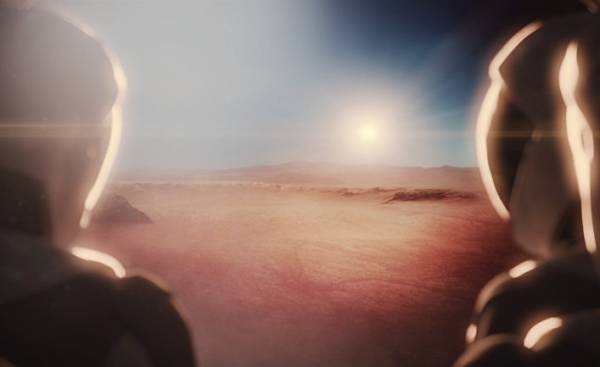 © flickr.com, Rsehole to Mars by the company SpaceX
© flickr.com, Rsehole to Mars by the company SpaceX
“Rotating sleeping crew and prompting some astronauts to carry the duty, we get more benefits than when all the astronauts are six months in hibernation,” says Bradford. A spaceship with settlers as corpora will be easier that will help a lot to increase its speed, reduce flight time, and it is also possible to provide a more reliable radiation protection due to the slowing of the metabolism. Further, says Bradford, the sleeping, the astronauts will not experience airsickness motion sickness, which is a common problem for the inhabitants of the ISS.
Bear hibernation
But what are the feelings from corpora in outer space? No, we are not talking about freezing to death in a cryogenic unit with subsequent recovery, says obstetrician and consultant Doug SpaceWorks Current (Doug Talk), therapeutic hypothermia treats children with anoxia. “Cryogenics is here that the success is zero, he explains. — The human body is not meant for freezing; it consists mainly of water and when the water increases in volume [this happens when the water freezes], this leads to the destruction of cells.”
Rather, the hibernation in astronauts will be like a coma. It’s a cross between a dreamless sleep and semi-conscious condition. “In coma patients, there are cycles of brain activity apparent from wakefulness to deep sleep without dreams,” explains Current. Although patients in coma can not move, their brain remains active and even respond to external stimuli, including verbal commands.
Bears in a state of hibernation are experiencing something similar. The body temperature is reduced only a few degrees (as in moderate hypothermia in humans), and metabolism is reduced by 75 percent. Bears in Northern climates can stay dormant for seven or eight months, and nothing to eat or drink; and pregnant females produce offspring and feed it even in a state of hibernation.
“People corpora will behave like bears, expresses the assumption Current. — They will have cycles of wakefulness to deep dreamless sleep. And like the bears, in the moment of awakening they will have the signs of lack of sleep”.
In may 2016, the NIAC leadership has adopted the second phase of the project, SpaceWorks, this time highlighting her $ 250,000 for the continuation of engineering studies, as well as operational and medical research. “Projects of the first phase proved that our intentions are quite real, says Derlet. — We are pleased that Dr. Bradford is making progress”.
The SpaceWorks team proposed to undertake some revision of the module housing, and an experiment with an artificial sleep for a period of two to three weeks with the participation of several healthy pigs. Pigs, like people, in a natural environment do not hibernate, and therefore their physiological response to artificial sleep better will help to understand what people expect from torpor than experiments on mice and snails. But according to Derleth, the rules prohibit NASA to Fund studies on pigs.
Therefore, SpaceWorks came up with an alternative suggestion: a comprehensive study already conducted and performed experiments on suppression of metabolism, to use this Foundation to create a program of action for the near future to develop the necessary technologies that will enable you to move to human trials, including more systematic research on animals. This summer, NIAC should conduct an interim review of the work SpaceWorks and make the decision to allocate or not funding for another $ 250,000.
“We still believe in the necessity of research on living creatures to develop the technology corpora and apply them over a longer period — was written by the founder and CEO of SpaceWorks John olds (John Olds). — For this step may require the participation of private sponsors”.
Whoever paid for this work, experimenting on animals would be difficult because it raises questions of ethical nature.
“I think NASA is right: we have to act slowly and gradually,” says Arthur Caplan (Arthur Caplan), working with the Director of the division of medical ethics at the medical center at new York University. Although many are enthusiastic about the future prospects of artificial sleep during long space flights, NASA does not need more troubles that she can deliver the animal, he said.
“Pigs in its physiology is quite similar to man, and therefore it is reasonable to use them for experiments, says Kaplan. — But critics can say the following: the number of pigs that will be brought to studies of this kind, there will be less than the average American eats in a week for Breakfast.”
The human factor
In science fiction movies and books torpor is idealized and described in a romantic spirit, says Kaplan. They create the impression that people without problems will be able to get in and out of this coma like state. But the reality may be different.
According to Kaplan, the first experiments will be set with the participation of very unusual people — most likely, it will be test pilots. “These people risk their lives daily; they understand the physiological danger, because I have planes and I know that many of their colleagues were killed. The astronauts told me that they are willing to participate in any experiment, just to fly into space. Our task is to hold them off,” he says.
Experiments involving human subjects would be an unprecedented step. No one has ever used hypothermia to slow metabolism in people who are not sick or injured, and certainly more than solely a healthy astronauts.
“We have so many healthy people who have expressed a desire to engage in long-term experiments with artificial sleep, says Current. — There is pent-up demand for people who are willing to disconnect from life for six months. I am sure that health authorities won’t approve”.
Meanwhile, the Current has invited the research team SpaceWorks two experts on therapeutic hypothermia: a medical Director of neurological intensive care units of the Mayo clinic Rabinstein Alejandro (Alejandro Rabinstein) and neuroscientist Kelly drew (Drew Kelly), who works in Fairbanks with the Alaska University, specializing in the hibernation of animals. Drew, along with other scientists of the Institute of Arctic biology at the University of Alaska is studying the patterns of hibernation of warm-blooded animals, such as hedgehogs, Beringian ground squirrels and bears. They hope to unravel the mystery of the condition of healthy slumber, and the brain signals that cause it, believing that it will help the astronauts adapt to no side effects.
For example, the Beringian ground squirrel (evraiki) in winter the body temperature drops to zero degrees. No scientist really knows what turns on the mechanism of hibernation. However, there is an assumption that a particular brain and muscle receptor, adenosine A1 receptor — leads to a decrease in body temperature of the gopher and cause him a sleep from which he awakens eight months later with minimal loss of bone and muscle mass.
“Adenosine is a neuromodulator that plays a role in promoting sleep and decreasing the excitability of the brain, says drew. He is present everywhere in the brain of animals.” She was put in hibernation the ground with the help of the drug, stimulate adenosine receptors A1. Drew can also display the gophers out of hibernation, using another drug that blocks these receptors.
But signaling cascade and the set of human genes is much more difficult to decipher and very hard. The task is complicated by the fact that hibernating animals sleep in different ways.
The only Primate that hibernates is the Madagascar dwarf lemur, which spends in a state corpora eight months of the year, mostly in hot weather. He lives at the expense of fat deposits in the tail. The reduction of metabolism in this animal does not require lowering body temperature.
Meanwhile, Rabinstein planning to carry out the analysis of mild hypothermia for the introduction of human condition corpora, says that the techniques used in the ICU in space, may not be as reliable.
“The fact that young children are “drowning” in the icy water, and then come to life is quite remarkable, and he gives us hope, ‘ he says. But can we apply our knowledge [deep hypothermia] to create more than mild hypothermia, so that people could be in this state much longer without adverse consequences, without the psychological and physiological stress? It is to be seen, but we think there is a chance”.
